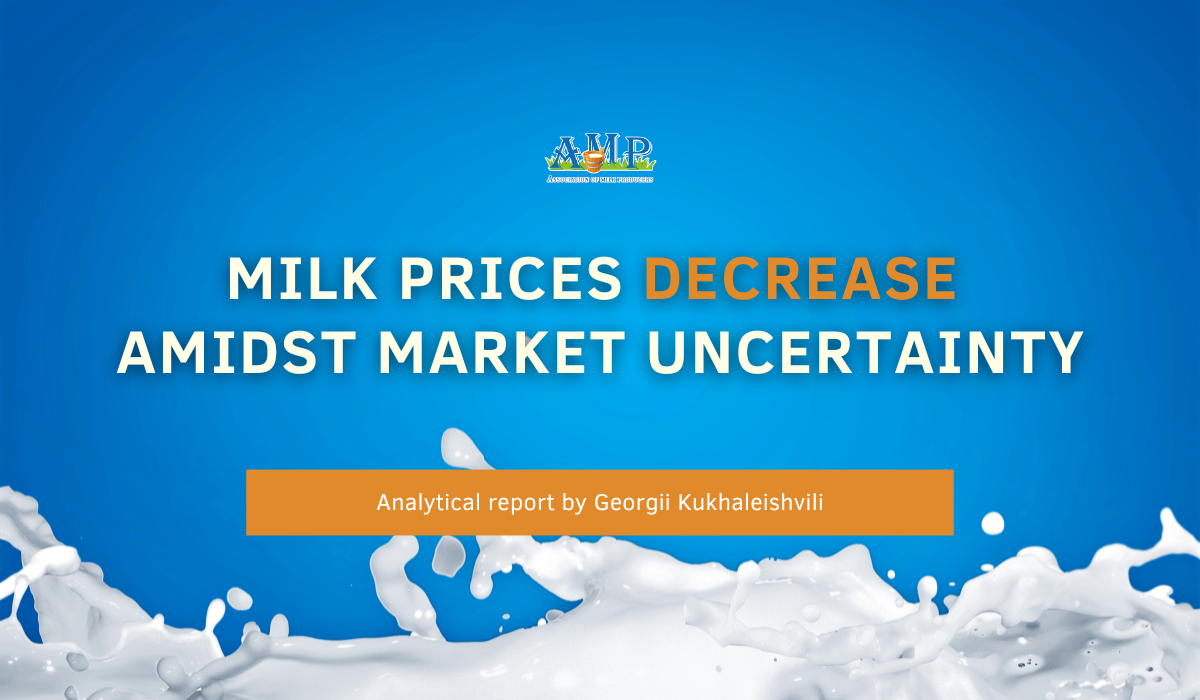While the minimum and maximum price ranges remained stable, changes occurred within the price corridor mainly due to increased exports of dairy products. However, the Ukrainian dairy market faces uncertainty. The trade war between the USA and Europe, with increased tariffs on dairy products, along with a potential threat of a foot-and-mouth disease outbreak, could significantly lower raw milk prices, according to Georgii Kukhaleyishvili, an analyst at the Association of Milk Producers of Ukraine.
As of April 7th, the average purchase price for extra grade milk was 16.25 UAH/kg excluding VAT, which is 25 kopecks less than a month ago. The price range for this grade on farms varies from 15.50 to 16.50 UAH/kg excluding VAT. The lower and upper limits of the price range decreased by 20 kopecks.
Higher grade milk costs an average of 16.00 UAH/kg excluding VAT (-30 kopecks). Prices for higher grade milk fluctuate from 15.30 to 16.20 UAH/kg excluding VAT. Compared to the monitoring results from the first half of last month, the lower limit of the price range decreased by 20 kopecks, and the upper limit decreased by 30.00 kopecks.
The average price for first grade milk was 15.65 UAH/kg excluding VAT, a decrease of 20 kopecks compared to the first half of last month. The minimum price on farms was 15.00 UAH/kg and remained unchanged over the last month. The maximum price was 15.80 UAH/kg, a decrease of 40 kopecks.
Consequently, the weighted average price for the three grades was 16.15 UAH/kg excluding VAT, which is 25 kopecks less than the previous period.
Georgii Kukhaleyishvili notes that at the beginning of April, the surplus of raw milk on the Ukrainian market decreased and approached a balance. Due to increased exports of dairy products from Ukraine, the surplus of exchange goods in warehouses has almost disappeared. Therefore, the minimum and maximum price ranges remained stable, and changes occurred within the price corridor due to increased export volumes of dairy products. In March, raw milk in Ukraine cost 28% less than in Europe, which boosted interest in domestic products in sales markets.
The trade war initiated by the US President Donald Trump's administration and the increase in tariffs on European dairy products are creating conditions for a decrease in raw milk prices in Europe. Until recently, the USA imported large volumes of cheese from France, Italy, and Ireland. European dairy processing enterprises will not be able to quickly reorient their export directions, and the accumulation of unsold exchange goods in warehouses will put pressure on prices.
The trade war has negatively affected the American dairy industry. Mexico was one of the key importers of dairy products from the USA, and now butter, skimmed milk powder, and whey of American production are accumulating in warehouses, putting pressure on prices. American exporters are reorienting to the markets of Asian and African countries, where producers from Europe, New Zealand, and South America are already actively operating. This may likely intensify competition in these sales markets.
The decrease in the dollar exchange rate may also restrain the growth of raw milk prices in Ukraine. Ukrainian companies will receive revenue for exported skimmed milk powder in dollars, and therefore the value of the goods in hryvnias may also decrease, pulling down raw milk prices. Skimmed milk powder, butter, and casein remain the main categories of Ukrainian dairy exports. In particular, in March, the profitability of skimmed milk powder and butter production was negative.
The situation on the domestic market will not contribute to the growth of raw milk prices either. In Ukraine, the consumption of dairy products by the population continues to decline against the background of intensified missile and bomb strikes by Russian occupiers on million-plus cities and the outflow of their residents abroad.
In the second half of April, a slight decrease in raw milk prices is likely. In the absence of force majeure circumstances, maximum prices may enter the corridor of 15.80-16.00 UAH/kg. However, the outbreak of foot-and-mouth disease in neighboring Slovakia and Hungary remains a real threat to the Ukrainian dairy industry. If the infection enters Ukraine, then the market is highly likely to experience a significant decrease in raw milk prices due to the introduction of quarantine and a ban on the export of finished products.
Press Service of the Association of Milk Producers
Follow us on Facebook
Related News


